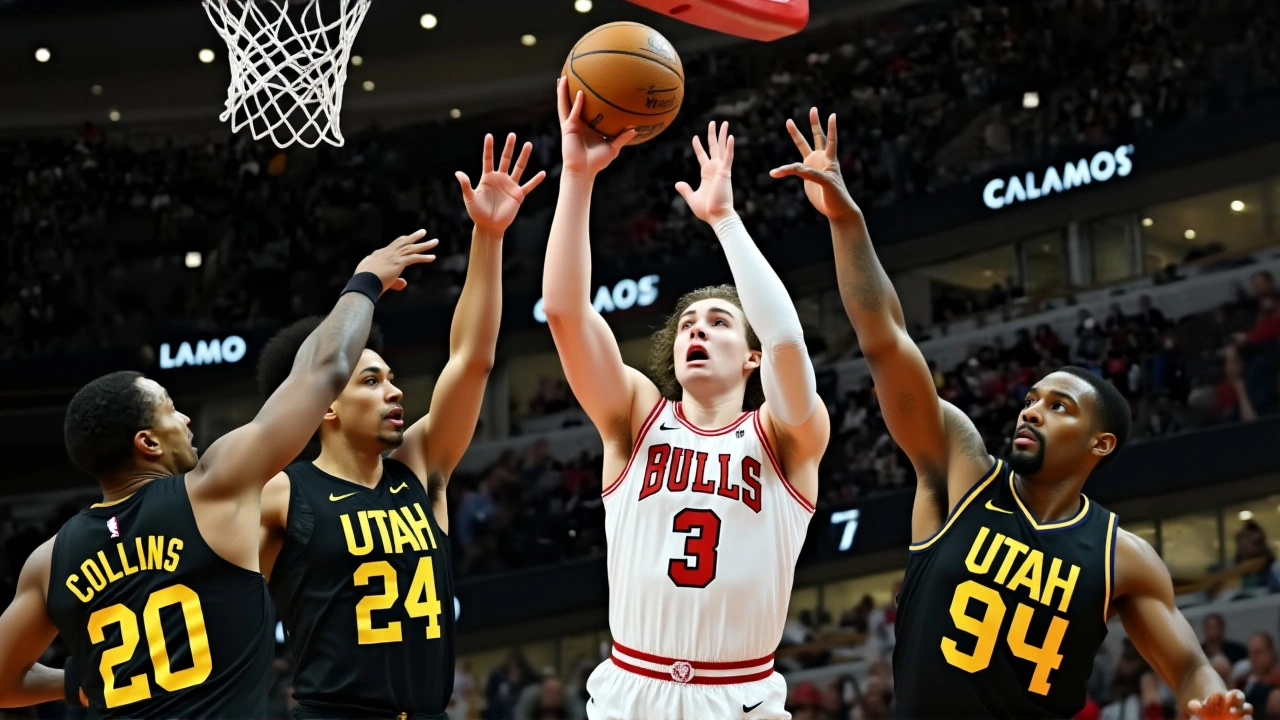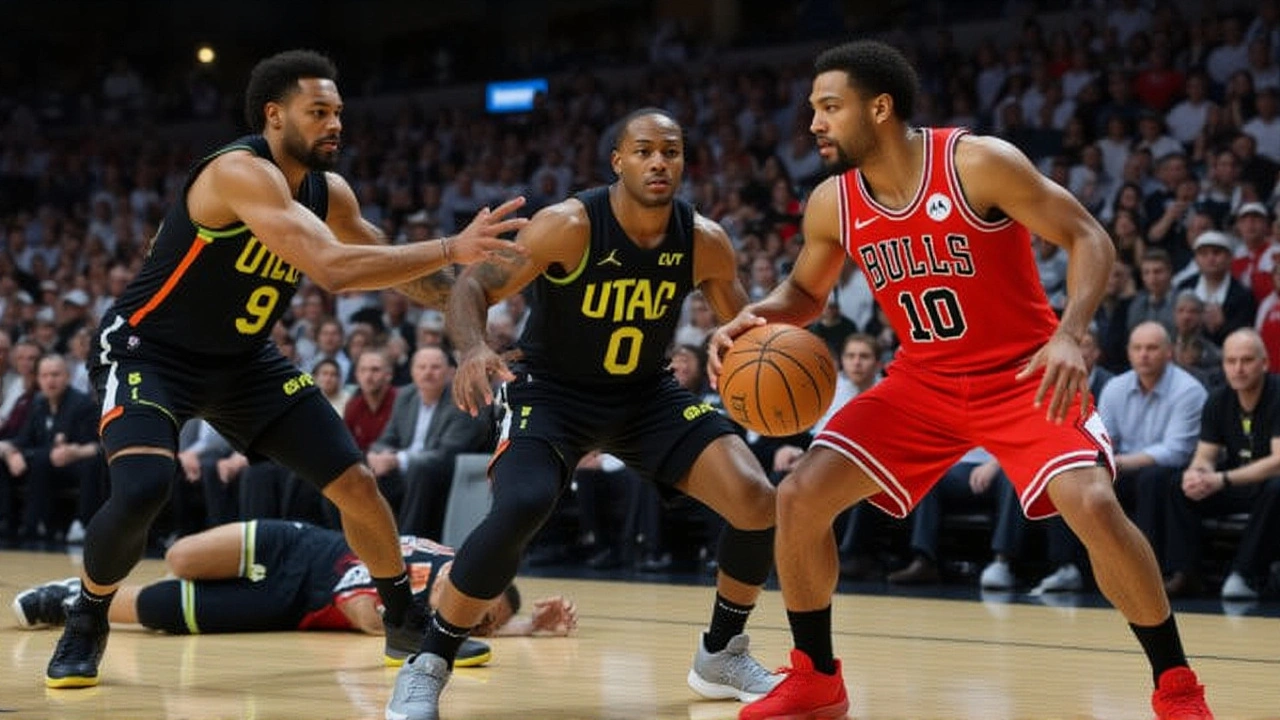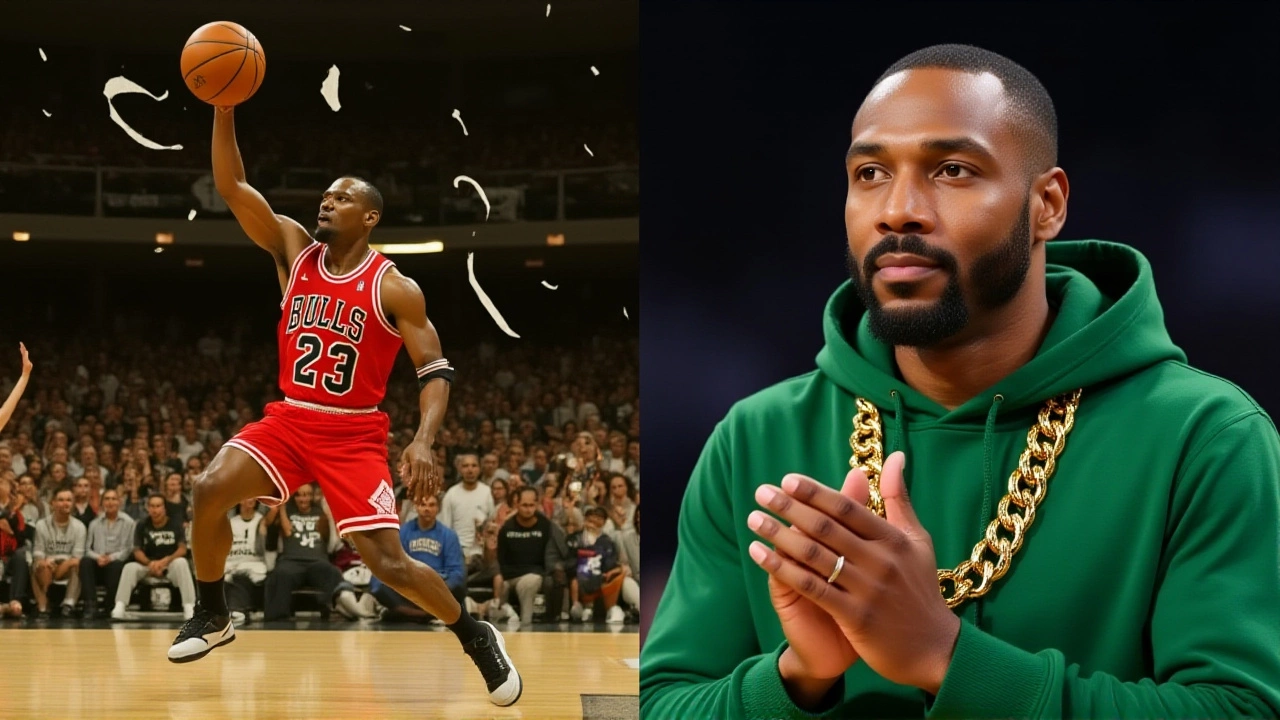Bulls vs Jazz Overtime Thriller: Injuries Decimate Both Rosters in 150-147 Jazz Win

- Nov, 17 2025
- 0 Komentar
- Wahyu Nugroho
The NBA injury report for the Chicago Bulls vs. Utah Jazz game on November 16, 2025, read like a battlefield casualty list — and yet, the game still happened. In a wild 150-147 overtime win for the Jazz, both teams battled through a roster decimated by injuries, turning what should’ve been a routine regular-season matchup into a test of depth, grit, and improvisation. The game, played at the Delta Center in Salt Lake City, wasn’t just decided by clutch shots — it was shaped by who wasn’t on the court.
Who Was Missing? The Injury List That Changed Everything
For the Chicago Bulls, the absence of Tre Jones, their starting point guard, was a seismic blow. Listed as QUESTIONABLE with a lingering ankle injury, Jones didn’t play — a decision confirmed hours before tip-off. His absence left the Bulls scrambling to replace their primary playmaker, a role usually filled by his 7.2 assists per game and defensive tenacity. Compounding the problem, shooting guard Coby White was officially OUT with a calf strain, a setback that removed one of Chicago’s most reliable scoring options off the bench. White, who averaged 18.4 points per game before the injury, had been heating up in November. His absence forced Ayo Dosunmu into a heavier offensive load — and exposed a lack of depth behind the starters.
On the other side, the Utah Jazz were reeling from the loss of their defensive anchor, Walker Kessler. The 23-year-old center, who averaged 12.8 points and 10.1 rebounds per game, was ruled OUT with a shoulder injury that, according to Team Rankings, will likely keep him sidelined for the remainder of the 2025-2026 season. That’s not just a game-time loss — it’s a franchise-altering blow. Without Kessler, the Jazz had no rim protector, no rebounding force, and no deterrent in the paint. Power forward Taylor Hendricks, a promising 21-year-old with elite defensive instincts, was also OUT with a hamstring strain, leaving the Jazz thin at the frontcourt.
The Players Who Showed Up — And Carried the Load
With so many missing, the spotlight fell squarely on those who were healthy — and they delivered. For the Jazz, Lauri Markkanen turned in a monster performance: 34 points, 8 rebounds, and 5 three-pointers in 41 minutes. His shooting was unstoppable, especially in the fourth quarter when he hit back-to-back threes to tie the game at 127. Meanwhile, Keyonte George, the Jazz’s 20-year-old guard, chipped in 23 points and 9 assists, showing poise beyond his years. Even Isaiah Collier, who had only played four games this season, stepped into the starting role and dished out 11 assists in 34 minutes — a career-high.
For the Bulls, Josh Giddey played through his own ankle issue — a fact confirmed by the team’s medical staff — and posted a near triple-double: 22 points, 10 rebounds, and 9 assists. He was the only Bull who consistently created offense, but even he looked drained by the fourth quarter. Nikola Vučević added 26 points and 13 rebounds, but without White or Jones, the Bulls’ ball movement suffered. They turned the ball over 21 times — a direct result of forced plays and poor spacing.

Why This Game Matters Beyond the Box Score
This wasn’t just another overtime loss for the Bulls. It was a wake-up call. With 10 games played, Chicago sits at 4-6 — and their injury list is growing. Tre Jones, Coby White, and Zach Collins (still OUT with a wrist injury) represent nearly 40% of their average scoring and 60% of their perimeter playmaking. The team’s depth chart is now a question mark. Meanwhile, the Jazz, despite losing Kessler for the season, showed resilience. Their win improved them to 7-5, and it proved they can win without their best defender — if their scorers stay hot.
But here’s the twist: the NBA’s official injury report for the Bulls’ next game — against the Denver Nuggets on November 17 — was marked as “NOT YET SUBMITTED.” That’s not normal. It suggests internal chaos, poor communication, or a medical staff overwhelmed. For a team trying to climb out of the Eastern Conference cellar, that’s more dangerous than any ankle sprain.
What’s Next? The Ripple Effects
The Jazz now face a brutal stretch: five of their next seven games are on the road, and they’ve lost their defensive identity. Without Kessler, teams will attack the paint with abandon. Coach Will Hardy may have to experiment with smaller lineups — but at what cost? Meanwhile, the Bulls’ front office is under pressure. With Tre Jones questionable for the next game and Coby White’s return timeline still unknown, they may need to explore trade options before the December 15 deadline. Their best hope? A healthy Lauri Markkanen (who’s on the Bulls) isn’t playing for Utah — but if Chicago doesn’t fix their roster soon, they’ll be watching the Jazz compete for a playoff spot while they fight to stay relevant.

Behind the Numbers: The Real Cost of Injuries
- Chicago Bulls have lost 5 of their last 7 games since Coby White went down on November 3.
- Walker Kessler’s absence means the Jazz are now allowing 118.7 points per 100 possessions — up from 109.2 when he played.
- Josh Giddey’s 21.4 PPG, 9.6 RPG, and 9.3 APG make him the only player in the NBA this season averaging a triple-double while playing through a confirmed injury.
- Without Tre Jones, the Bulls’ assist-to-turnover ratio dropped from 1.8:1 to 1.1:1 in their last three games.
Frequently Asked Questions
How does Walker Kessler’s season-ending injury impact the Jazz’s playoff chances?
Losing Walker Kessler is a massive blow. He was the Jazz’s only reliable rim protector and elite rebounder, and his absence opens the door for opponents to attack the paint aggressively. Without him, Utah’s defensive rating has slipped into the bottom third of the league. While their offense is strong, they’ll need to rely on team defense and speed to compensate — a risky strategy in the playoffs, where physicality dominates.
Why is Tre Jones’ absence so damaging to the Chicago Bulls?
Tre Jones isn’t just a scorer — he’s the Bulls’ primary ball-handler and defensive stopper. He averages 7.2 assists and 1.8 steals per game, and his ability to control tempo keeps Chicago’s offense from collapsing. Without him, the team relies on Ayo Dosunmu and Josh Giddey to create, which leads to forced shots and turnovers. His absence has turned the Bulls from a structured team into a disjointed group of individuals.
Can the Bulls still make the playoffs with this injury situation?
It’s unlikely. Even with Lauri Markkanen playing at an All-Star level, Chicago’s depth is nonexistent. With White, Jones, and Collins all out, they lack reliable scoring options beyond their top three. The Eastern Conference is deeper than ever, and teams like the Knicks, Celtics, and Heat are pulling away. Unless the Bulls make a trade before the deadline or get significant health improvements, their playoff hopes are fading fast.
What does this game reveal about the Jazz’s identity this season?
The Jazz are no longer a defense-first team — they’re an offense-driven squad built on shooting and pace. With Kessler gone, they’ve embraced a faster, more perimeter-oriented style. Keyonte George and Lauri Markkanen have become the engine, and their ability to stretch the floor makes them dangerous. But this identity is fragile. If their shooters go cold — or if injuries pile up — they’ll struggle to win close games without rim protection.
Why was the Bulls’ injury report not submitted on time?
The NBA requires teams to submit injury reports by 11 a.m. ET the day before a game. Chicago’s failure to submit for their next game suggests internal disorganization — possibly due to medical staff overload, poor communication, or even a lack of trust in the reporting system. It’s not just a procedural issue; it’s a sign of deeper dysfunction in the front office and medical department.
How did Josh Giddey play through his ankle injury?
Giddey played 43 minutes on a swollen right ankle, using ice packs during timeouts and wearing a compression sleeve. The Bulls’ medical staff confirmed he had been receiving daily treatments since November 10, but he refused to sit out. His performance — 22 points, 10 rebounds, 9 assists — was remarkable, but it also raises concerns. Playing through pain increases the risk of long-term damage. If he aggravates the injury, the Bulls could lose him for weeks.